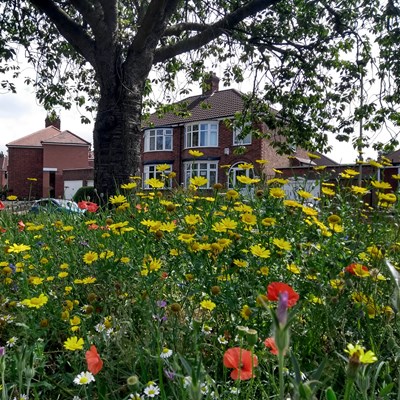LEICESTER’S three-and-a-half miles of 'Bee Roads' are buzzing with wildlife and summer wildflower blooms thanks to a city council-led project to protect our pollinators.
Swathes of wildflowers seeded on some of the major routes in and out of the city as part of the Leicester Bee Road project have put on a fantastic display that attracts our bees and butterflies as well as appreciation by people passing by.
Leicester City Council’s parks services teams have so far seeded 21 roadside locations and roundabouts across Leicester to help make the city a haven for pollinators by providing food stops for them to re-fuel on their way to larger parks and nature reserves.
Cllr Adam Clarke, deputy city mayor for the environment and transportation, said: “The city’s network of Bee Roads is playing a vital role in supporting our bees and butterflies. This project is a key part of our biodiversity action plan and our ongoing commitment to protecting the city’s wildlife and we will be extending this programme in the coming the years.”
“Even our busy main roads can play a part in helping these insects and the wildflower verges make these streets more attractive for everyone. The Bee Roads already extend around most of the ring road and major routes into Leicester so it should be easy to spot these colourful and eye-catching displays”
Mick Eaton, horticultural adviser for Leicester City Council said: “The wildflower seed has been selected to provide a long-lasting flowering display and food source for the pollinators around the city. Where possible, we have chosen a combination of colour and food that will flower from March to November.
“We first get the reds and whites of the poppies and oxeye daisies followed by the blues such as cornflowers and love-in-the-mist that are taller and hide the earlier species as they die off. The late display of colour comes with the Californian poppy and marigolds which flower into November”.
Senior nature conservation officer Dr Helen O’Brien also explained: “We have trialled areas to see what combination of plants grow well on verges and attract the greatest number of pollinators. We have now found a seed mix that works well for the sites around Leicester and provide more pit-stops for our pollinators.
“We are using natural ways to control the lusher areas of grass by using Hay-rattle, a plant that is a natural parasite to grasses. This will reduce its vigour and allow the wildflowers to flourish.
Areas where the pollinator pit-stops are in bloom now include Aylestone Road (opposite Aylestone Hall Gardens), Saffron Lane railway embankment verges, Redhill Circle roundabout, Goodwood Road and Troon Way.
Streets earmarked for the next phase of the project include Anstey Lane, Troon Way, New Parks Way and Beaumont Leys Lane.
The Leicester Bee Roads project started in 2017 in partnership between the city council and the environmental charity Buglife.
